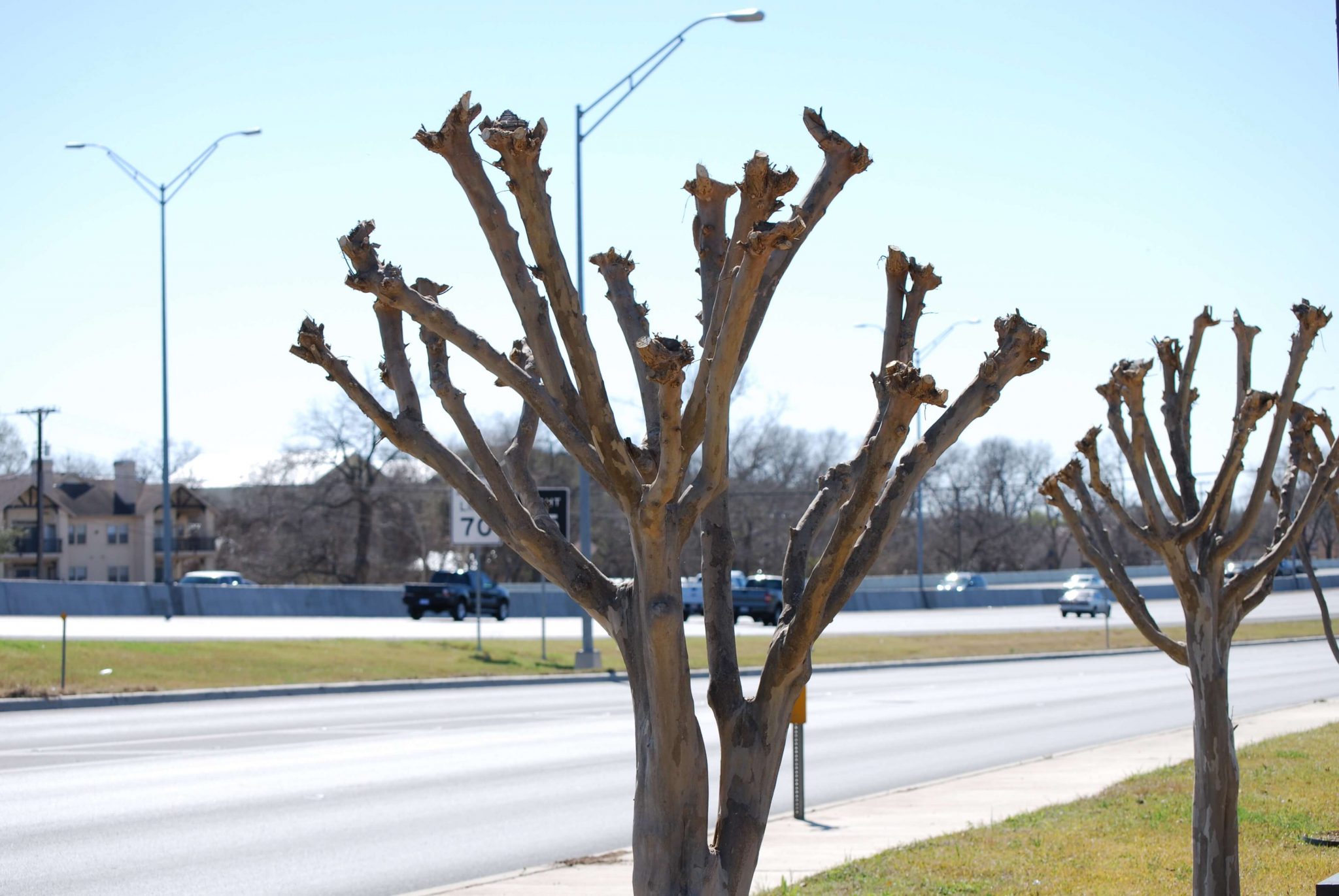Crape myrtle is an excellent drought-tolerant plant for a variety of landscape situations. It also requires absolutely zero pruning.
Like the annual arrival of the purple martins, the wanton pruning of crape myrtles begins in spring. It’s known by many names: heading back, topping, pollarding, hedging, etc. Still, by any name, it’s a crime against nature.

What rends my arborist soul is that this type of pruning is totally unnecessary and a complete waste of time and money. Contrary to the popular belief that topping, heading back, etc. increases flower production, such practices actually weaken the tree, shorten its life and increase its susceptibility to pests. Read more about it here.
So what’s the correct way to prune a crape myrtle? Well, like most trees, a crape myrtle does not require any pruning. But if you absolutely must, the correct way to prune any tree is to always cut back to another branch or a bud. This retains the natural shape and the terminal buds, which determine the amount and direction of twig growth. Think of a large flower vase — all branches go up and outward.
It’s a simple process really. But if you’re a visual learner, check out our how-to video on pruning. Your crape myrtles will thank you.
The ultimate solution, of course, is to plant a crape myrtle that matures to the size you want. (No pruning ever!) Consult this convenient guide to select the right crape myrtle for your needs.
Crape myrtle is an excellent drought tolerant plant that may be used in a variety of landscape situations. It should never be abused — prune judiciously and with forethought.




